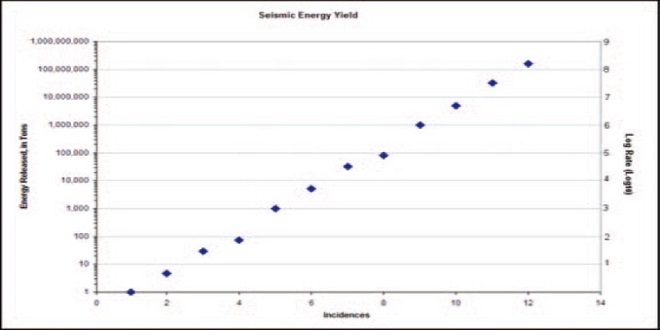There’s no question that businesses need to gather data if they want to stay competitive in today’s digital age. However, simply gathering data is no longer enough, as businesses need to make sure they are also analyzing and acting on that data to get the most value from it. One of the best ways to do this is to implement a data-driven decision-making process. This involves setting up a system where data is collected and analyzed on a regular basis and then used to make decisions that improve business performance.
There are a few key steps involved in setting up a data-driven decision-making process. The first step is to gather data from all of the different sources that are relevant to your business. This data can come from internal sources, such as sales and marketing data, or from external sources, such as social media or other online channels. Once you have gathered all of this data, you need to analyze it to see what trends and patterns emerge. This analysis can help you to understand what is happening within your business and identify areas where you can improve. Once you have analyzed the data and identified areas for improvement, you need to take action based on that information. This could involve making changes to your business processes or products, or it could simply involve making decisions based on the data that you have gathered. Once you have taken action, you need to monitor the results to see if your changes have had the desired effect. This will help you to determine whether the data-driven decision-making process is working for your business or not. Implementing a data-driven decision-making process can be a bit of a challenge, but it is worth it in the end.
When analyzing data, a useful strategy is to use data visualization techniques, such as line charts, bar charts, pie charts, and logarithmic charts. Keep reading to learn what is a logarithmic chart and how your business can use it.
What is a logarithmic chart?

A logarithmic chart is a graph that uses logarithmic scaling for one or more of its axes. This type of chart is often used when there is a large range of data points, as the logarithmic scale can compress the data so that it is easier to see patterns and trends. The vertical axis on a logarithmic chart uses a logarithmic scale, which means that the distances between the points on the axis are proportional to the values of the data. The horizontal axis displays the values of the data in standard form. The smaller values will be represented by a wider line on the chart and the larger values will be represented by a thinner line. This helps to make it easier to see the trend in the data and compare different sets of data.
How do you create a logarithmic chart in Excel?

There are several steps involved in creating a logarithmic chart in Excel. The first step is to create your data table. In your table, you will need to include the x-axis values (the independent variable) and the y-axis values (the dependent variable). Once your table is set up, you can then create your graph by selecting the Chart Wizard from the Insert tab on the Ribbon. In the Chart Wizard, select Column as your chart type and then click Next. On the next screen, select Logarithmic as your Trend Type and then click Next again. Finally, select the range of cells containing your data table and click Finish. Your logarithmic chart will be created.
There are also some best practices that can help you create and use a logarithmic chart effectively. First, decide which data to display in the chart. The data should be something that varies widely in magnitude so that the logarithmic scale is useful. Then, choose the right scale for the vertical axis. The vertical axis of a logarithmic chart should be scaled logarithmically, which means that the spacing between each mark on the axis should be constant. The axes of a logarithmic chart should be drawn as linear axes, not as logarithmic axes. This will ensure that the chart is correctly scaled. It is also important to label the axes of a logarithmic chart properly. The vertical axis should be labeled “logarithmic scale” or “log scale,” and the horizontal axis should be labeled “frequency” or “count.” Perhaps the most important tip for using a logarithmic chart is to use a logarithmic scale for the vertical axis. This will ensure that the chart displays the data correctly.
What are the advantages and disadvantages of using a logarithmic chart?

Logarithmic charts are used to show data that is growing or shrinking at a consistent rate. This type of chart is advantageous because it can compress a large amount of data into a small space and make it easy to see patterns and trends. One of the main advantages of using a logarithmic chart is that it can help you to better visualize data that is spread out over a large range. For example, if you are looking at the sales data for a company over a period of 10 years, a logarithmic chart can help to show you the trend more clearly than a standard linear chart. This is because a logarithmic chart will “zoom in” on the data that is closer to the current point while still showing you the overall trend.
Another advantage of using a logarithmic chart is that it can help you to compare data that is on different scales. For example, if you are comparing the sales data for two different companies, you can use a logarithmic chart to compare the two data sets even if the scales of the two data sets are different. This is because a logarithmic chart will adjust the scale of the data to make it easier to compare.
However, there are also some disadvantages to using this type of chart. One disadvantage is that the eye cannot easily compare values on a logarithmic scale. In other words, if you want to compare two different points on the chart, you need to first convert them into their equivalent values on the linear scale. This can be time-consuming and difficult to do accurately.
Another disadvantage is that logarithmic charts can be misleading if the data does not grow or shrink at a consistent rate. For example, if the data includes both large and small values, it will be difficult to determine whether the trend is positive or negative.
A logarithmic chart is useful because it can show a trend in data that is otherwise difficult to see. Take advantage of logarithmic scales to better understand your company’s data.
 Pagal World
Pagal World




